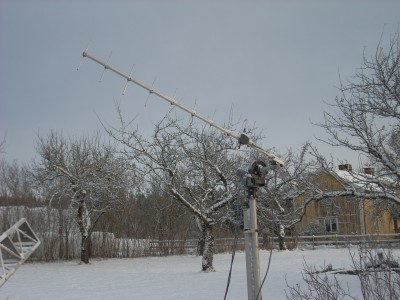
Cubesat AESP-14 släpptes ut från ISS den 5:e februari 2015. Kort efter släppet var meningen att den skulle börja sända sin telemetri på 437.600 MHz med en uteffekt på 500 mW. Men hittills har ingen hörts från satelliten och nu ber AESP-14 teamet om hjälp. Läs mer nedan:
On Thursday, February 5 the Brazilian satellite AESP-14 was deployed from
the International Space Station (ISS) but so far no signals have been heard.
The AESP-14 telemetry beacon has a power output of 500 mW and uses AX.25 on
437.600 MHz with 9600 bps GMSK modulation (G3RUH standard). It should have
started transmitting 30 minutes after deployment but as of Thursday night
nothing had been heard. It may be the battery did not survive several months
without being recharged or the antenna may have failed to deploy.
The AESP-14 team would like to ask the help of radio amateurs around the
world to forward any received telemetry frames back to the team. For this,
please save the AX.25 frames in KISS format and forward the file to
aesp14@ita.br. The satellite was sent to the ISS as cargo on the SpaceX
Falcon 9 mission CRS-5. Launch had been scheduled for December 16, 2014 but
was postponed three times and it wasn’t until January 10, 2015 that the
launch eventually took place. Since arriving at the ISS on January 12
AESP-14 has been awaiting deployment by the JEM Orbital Deployer (J-SSOD)
which is in the Japanese Kibo module.
The satellite has an amateur radio experiment developed by the Americana
Amateur Radio Club (CRAM). The experiment consists of the random
transmission of 100 sequences of ASCII characters prefixed with the “CRAM”
word that will used as part of a contest among receiving stations. The first
10 amateur radio stations that complete receiving the 100 sequences will be
awarded a commemorative diploma.
Further details at
http://wabicafe.com.br/aesp14/cram.php
AESP-14 website
http://www.aer.ita.br/~aesp14
[ANS thanks the AESP-14 Team and the Southgate ARC for the above information]






